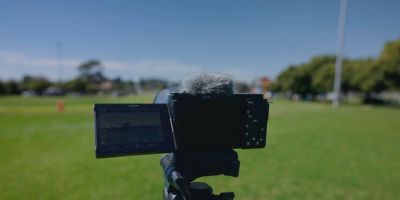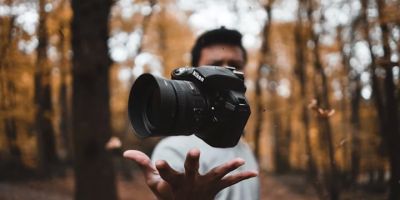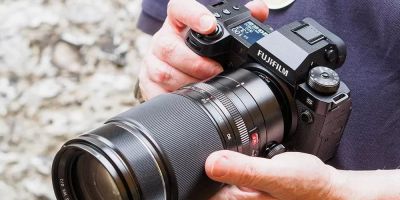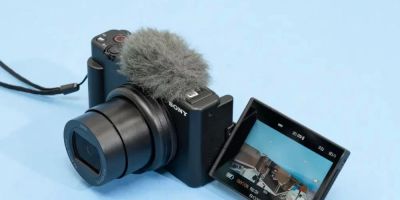- 1-Advantages-of-a-camera-with-flip-out-screen
- 2-How-flip-out-screens-enhance-photography-experience
- 3-Choosing-the-right-camera-with-flip-out-screen
- 4-Real-world-uses-and-user-experiences
- 5-Professional-advice-for-optimizing-flip-out-screen-use
1. Advantages of a Camera with Flip Out Screen
Modern photography demands versatility, and one feature that stands out in many cameras today is the flip out screen. A camera with flip out screen offers photographers and videographers greater flexibility in composing shots, especially in challenging angles or self-recording situations. Unlike fixed screens, flip out displays can be adjusted to face different directions, enabling easier framing whether you’re shooting high above crowds, close to the ground, or taking selfies.
This adaptability not only improves the shooting experience but also reduces the need for awkward body positioning that can lead to missed shots or physical discomfort. The convenience of seeing the scene clearly from multiple angles is a game-changer, particularly for content creators who work solo.
2. How Flip Out Screens Enhance Photography Experience
Beyond convenience, a flip out screen enhances both creativity and precision. For example, when shooting vlogs or tutorials, the ability to monitor your frame in real-time while facing the camera increases confidence and content quality. Photographers working in crowded or tight spaces can compose their images without contorting their bodies or guessing angles blindly.
The tactile experience also improves; many flip out screens are touch-sensitive, allowing quick adjustments to settings or focus points directly on the screen. This intuitive control speeds up the workflow, letting users capture moments faster and with more accuracy.
For wildlife photographers, flip out screens can be crucial. One photographer shared how using a camera with a flip out screen allowed her to shoot animals from hidden vantage points without exposing herself to potential danger or disturbing the scene. This real-life application illustrates how this feature elevates not only user convenience but also the art of photography itself.
3. Choosing the Right Camera with Flip Out Screen
When selecting a camera with a flip out screen, there are several factors to consider to ensure it fits your needs. First, think about the screen’s size and resolution. Larger, high-resolution screens provide clearer previews and make menu navigation easier. Secondly, check the screen’s articulation range—some flip fully outward and rotate 360 degrees, while others have limited tilt angles.
Another important aspect is durability. If you often shoot outdoors or travel, a robust, weather-sealed screen mechanism will provide longevity. Also, evaluate other features such as autofocus performance, sensor quality, and lens compatibility to complement the flip out screen.
To explore a wide range of options tailored to various skill levels and budgets, visit Photo Studio. Here, you can find the most suitable cameras with flip out screens along with expert advice and service recommendations that help you make an informed decision.
4. Real-World Uses and User Experiences
Many photographers and videographers have shared stories highlighting the advantages of a flip out screen in everyday shooting. For instance, a wedding photographer recounted how the flip out screen saved him during a crowded ceremony when he couldn’t raise his camera above the guests. Being able to angle the screen downward allowed him to capture precious moments without obstructing anyone’s view.
Similarly, travel vloggers frequently cite flip out screens as essential gear. One popular creator explained how this feature enabled seamless self-filming in busy markets and scenic locations, eliminating the need for bulky tripods or guesswork.
These firsthand accounts demonstrate how a camera with flip out screen can transform challenges into creative opportunities, offering users greater control and confidence in their craft.
5. Professional Advice for Optimizing Flip Out Screen Use
To get the most out of your camera’s flip out screen, professionals recommend familiarizing yourself with its range of motion and touch capabilities. Practicing quick angle adjustments during shoots can make a significant difference, especially in fast-paced environments.
Another tip is to use the screen’s ability to display grids or histograms to assist with composition and exposure on the spot. Taking advantage of these visual aids helps maintain consistent image quality without the need for post-edit corrections.
Additionally, pairing your camera with accessories such as screen protectors or external monitors can enhance usability and durability. These small investments support long-term performance, especially if you frequently shoot outdoors or on the move.
For the best equipment and accessories designed to complement cameras with flip out screens, Photo Studio offers a carefully curated selection along with knowledgeable support to elevate your photography experience.





